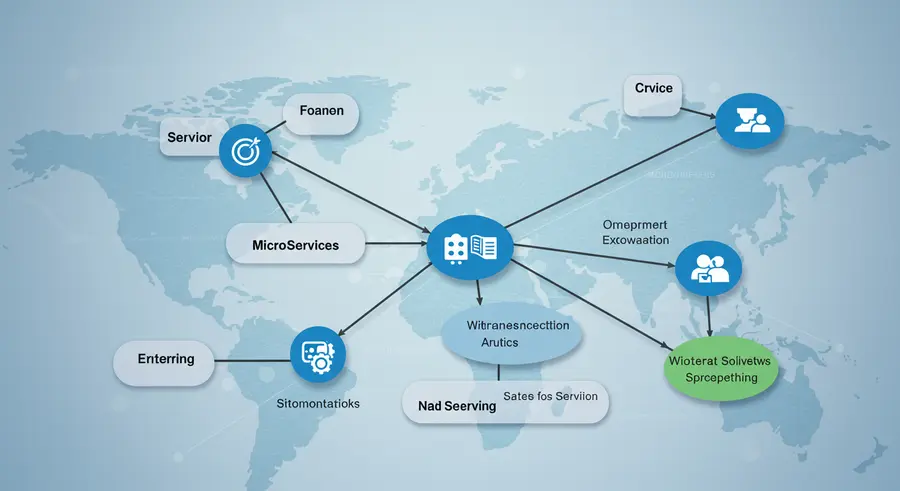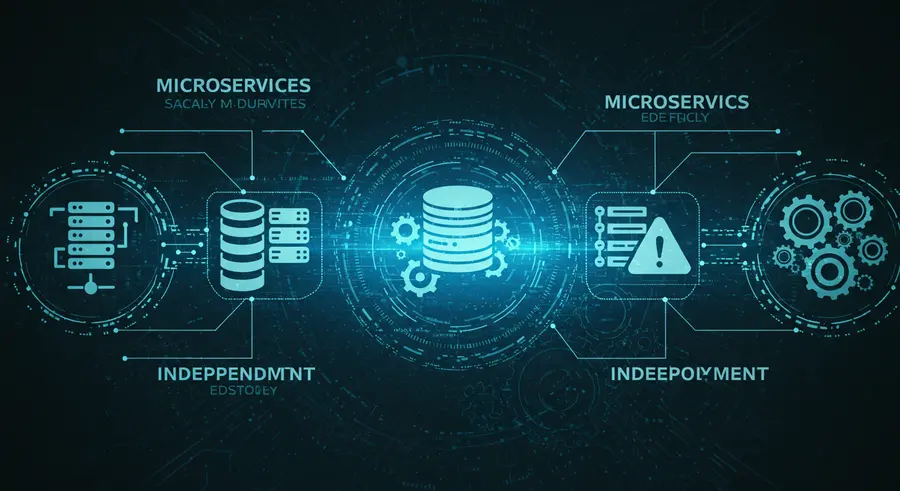Appearance

Welcome, tech enthusiasts! 👋 Today, we're embarking on an exciting journey into the world of Microservices Architecture. If you've been around the software development block, you've likely heard this buzzword. But what exactly does it mean? And why has it become so popular? Let's break it down in a way that's easy to understand, packed with examples and insights!
🌟 What are Microservices Anyway?
Imagine you're building a massive LEGO castle. Instead of trying to build the entire castle as one giant, monolithic piece, what if you built smaller, individual towers, walls, and gatehouses? Each of these smaller pieces could be worked on independently, perhaps even by different people, and then assembled to form the final magnificent castle.
That's the core idea behind microservices! 💡
In software terms, a microservice architecture is an approach to developing a single application as a suite of small, independent services. Each service runs in its own process and communicates with others, typically using lightweight mechanisms like HTTP/REST APIs.
Contrast this with a monolithic architecture, where the entire application is built as a single, indivisible unit. Think of it like that one giant LEGO piece – if one part breaks or needs an update, the whole thing might be affected.
Key Characteristics of Microservices:
- Small and Focused: Each service is designed to do one thing and do it well. For example, in an e-commerce application, you might have separate services for user authentication, product catalog, order management, and payment processing.
- Independently Deployable: This is a huge win! You can update, test, and deploy each service without affecting the others. Need to roll out a new feature for the product catalog? No problem! The payment service can continue running uninterrupted. ⚙️
- Technology Diversity: Different services can be written in different programming languages or use different data storage technologies. This allows teams to pick the best tool for their specific job. Maybe the recommendation engine is best built in Python with a graph database, while the user authentication service uses Java and a relational database. 🐍☕
- Decentralized Governance: Teams can own their services, fostering a sense of responsibility and enabling faster decision-making.
- Resilience: If one service fails, it doesn't necessarily bring down the entire application. For example, if the recommendation service in our e-commerce app goes down, users might not see product suggestions, but they can still browse products, add to cart, and checkout. 🛡️
- Scalability: You can scale individual services based on their specific needs. If your product catalog gets a ton of traffic, you can scale just that service without having to scale the entire application. 📈
🤔 Why Bother with Microservices? The Benefits!
The shift from monoliths to microservices isn't just a fad; it's driven by tangible benefits, especially for large and complex applications.

- Improved Agility and Faster Release Cycles: Because services are smaller and independent, development teams can work in parallel, leading to faster development and deployment. New features and updates can be rolled out more frequently. 🚀
- Enhanced Scalability: As mentioned, services can be scaled independently. This is much more efficient and cost-effective than scaling an entire monolithic application. If only 10% of your application is a bottleneck, you only need to scale that 10%.
- Better Fault Isolation (Resilience): A failure in one microservice is less likely to impact other parts of the application. This makes for more robust and resilient systems. If the "related articles" service on a blog goes down, users can still read the main article.
- Technology Flexibility: Teams can choose the best technology stack for their specific service. This allows for innovation and optimization at a granular level.
- Easier to Understand and Maintain: Smaller codebases are generally easier for developers to understand, modify, and maintain. This can lead to higher quality code and reduced cognitive load. 🧠
- Organizational Alignment: Microservices can align well with smaller, autonomous teams (often called "two-pizza teams"). This structure can improve focus and speed.
🛠️ A Practical Example: E-commerce Platform
Let's revisit our e-commerce example. A monolithic e-commerce app might have all its logic – user accounts, product listings, shopping cart, orders, payments, reviews – bundled into one large codebase and deployed as a single unit.
With microservices, it might look like this:
- User Service: Handles user registration, login, profiles.
- Product Catalog Service: Manages product information, categories, search.
- Inventory Service: Keeps track of stock levels.
- Order Service: Processes new orders, manages order history.
- Payment Service: Integrates with payment gateways.
- Shipping Service: Calculates shipping costs, arranges delivery.
- Review Service: Allows users to submit and view product reviews.
- Notification Service: Sends emails or SMS for order confirmations, shipping updates, etc.
Each of these services would have its own database (or share one, though separate databases are often preferred for true independence) and communicate with others via APIs.
For instance, when a customer places an order:
- The Order Service receives the request.
- It might call the User Service to verify user details.
- It calls the Product Catalog Service to get product prices.
- It calls the Inventory Service to check stock and reserve items.
- It calls the Payment Service to process the payment.
- Once payment is confirmed, it updates its own database and might call the Notification Service to send an order confirmation email.
This modularity means the team working on the Review Service can deploy updates multiple times a day without any risk to the payment processing flow!
⚠️ Challenges and Considerations
While microservices offer many advantages, they also introduce their own set of complexities:
- Increased Complexity: Managing a distributed system of many services is more complex than managing a monolith. You need to deal with inter-service communication, service discovery, distributed tracing, and more.
- Operational Overhead: You'll need robust automation for deployment, monitoring, and management of many services. Tools like Kubernetes, Docker, and service meshes (like Istio or Linkerd) become essential. 🤖
- Network Latency and Reliability: Communication between services happens over a network, which can introduce latency and potential points of failure. Careful API design and fault tolerance patterns (like circuit breakers) are crucial.
- Distributed Data Management: Ensuring data consistency across multiple services can be challenging. You might need to embrace eventual consistency and use patterns like sagas.
- Testing: End-to-end testing can be more complex as it involves multiple services. Contract testing between services becomes important.
- Debugging: Tracing a request that flows through multiple services can be difficult without proper distributed tracing tools.
🌐 The Original Inspiration: Understanding Microservices Architecture
This blog post draws inspiration and aims to expand upon the concepts often discussed in foundational texts and articles about microservices. One such resource, which provides a great overview, is the "Understanding Microservices Architecture" guide. It's a fantastic starting point for anyone looking to grasp the basics.
Our goal today was to dive a bit deeper, provide more practical examples, and highlight not just the "what" but also the "why" and "how" with a more descriptive and illustrative approach. 🎨
✨ Conclusion: Are Microservices Right for You?
Microservices aren't a silver bullet. For small, simple applications, a monolith might still be the most straightforward and efficient approach. However, for larger, more complex applications where scalability, agility, and resilience are paramount, a microservice architecture can be incredibly powerful.
The key is to understand the trade-offs. Adopting microservices means embracing new tools, new patterns, and often a new way of thinking about software development and team organization.
What are your thoughts on microservices? Have you worked with them? Share your experiences and insights in the comments below! 👇
Happy Coding! 💻🎉